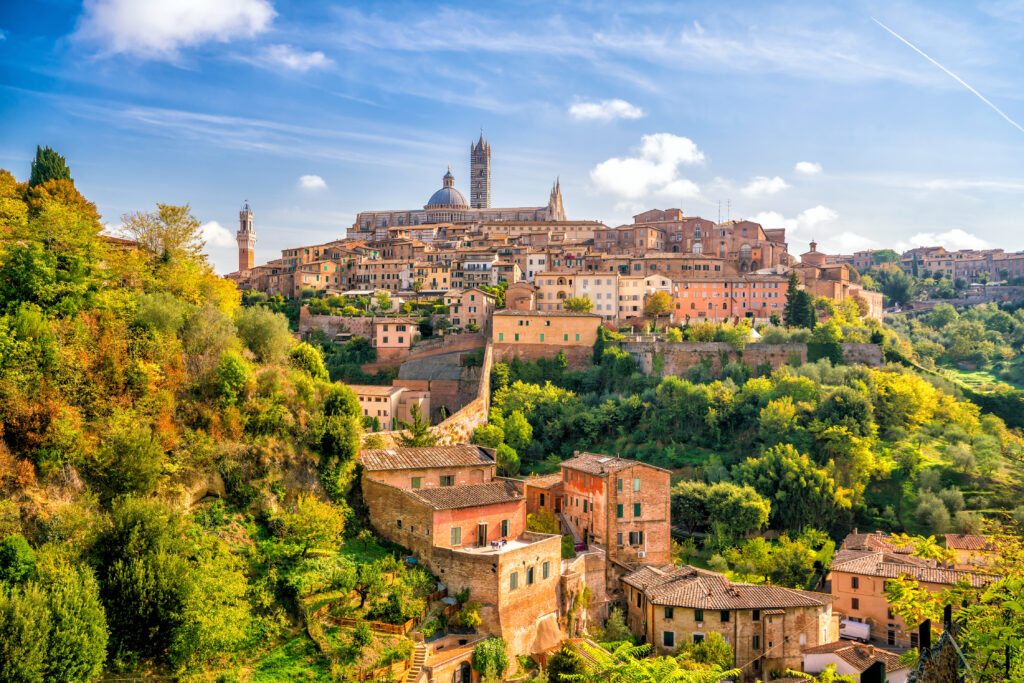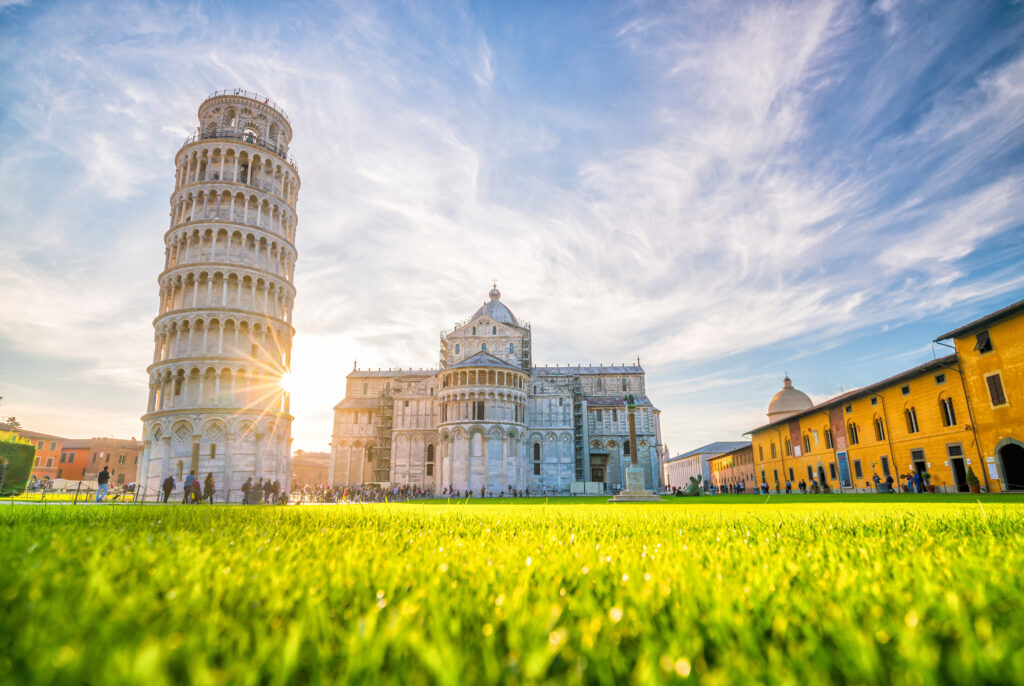ON THE TRACKS OF THE
ETRUSCANS
Whoever goes on holiday in Tuscany will come across them again and again: The Etrushi. Already in the year 1.000 B.C. the mystical people of the Etruscans settled the area of today's Tuscany.
The history of the Etruscian civilization in Tuscany
Florence is the economic and cultural capital of Tuscany and a must for every traveller to Italy! It is divided by the river Arno, which meanders through the city. The most beautiful view is from the “Piazzale Michelangelo”: On the weekends, the locals are also attracted by the view of its beauty with the red tiled roofs, church towers, palaces, and the cathedral dome of Brunelleschi. It was declared a UNESCO World Heritage Site in its entirety in 1982. Already in the 1st century B.C., Florence is said to have been founded as a Roman military camp at the foot of the Etruscan town Fiesole. In the 12th century, under the power of wealthy merchants, it became a coveted trading town. The political crisis of the 14th century was exploited by rich merchant and banker families to take over the power of the city.
In 1434, Cosimo de Medici seized power for the Medici dynasty and his successor led the city to its highest peak. It became the centre of art and science. After the Medici became too powerful, they expelled the Florentines, who had always been bourgeois. With the annexation to the Kingdom of Italy, Florence even became the capital of Italy from 1865 to 1871.
The historical centre of the city has its centre north of the Arno on the “Piazza della Repubblica”. The distances are short and the old town has been traffic-calmed – perfect for a relaxing stroll along the most important Renaissance sights! In addition, the striking “Piazza della Signoria” has many Renaissance buildings, such as the “Palazzo Veccio”, the old town hall and museum, the bridge “Ponte Vecchio”, the “Basilica San Lorenzo”, the “Palazzo Pitti” and the world-famous Uffizieni.
Pisa and the Leaning Tower
The landmark of Pisa is undoubtedly the Leaning Tower on the beautiful “Piazza dei Miracoli”, which you should not miss on a trip to Tuscany! Also known as the “Square of Miracles”, it impresses with the incredibly large “Duomo Santa Maria Assunta” from the 11th century and the “Battistero San Giovanni”, the largest baptistry in the world. The “Campanile”, the Leaning Tower, with its fine white marble arches, is probably the most photographed building on the square and offers the most beautiful view of the “Piazza”. The “Piazza dei Miracoli” ensemble was declared a UNESCO World Heritage Site in 1987.
Pisa also boasts an almost completely preserved city wall crowned with battlements and an enchanting cityscape on the banks of the Arno. One of the most charming squares of Pisa is the “Piazza dei Cavalieri” with the magnificent “Chiesa di Santo Stefano dei Cavalieri” and the “Palazzo della Carovana”.
The lagoon city was probably of Etruscan origin and became an important Roman naval base. It soon developed into one of the most powerful maritime republics and its shipyards enjoyed world fame. Through Pisa, the Islamic natural sciences and art forms entered Europe! Due to the unstoppable siltation of the harbor, the city moved further and further into the country – today it is about 8 km inland.The Cities of Art: Siena, San Gimignano, and Lucca
The brick-red city of Siena is a UNESCO World Heritage Site and is considered by many to be the most beautiful city in Tuscany! It impresses with the “Piazza del Campo”, the square of squares, where the Palio of Siena takes place every year, and the preciously equipped cathedral, as well as rich museums. Its university and various colleges make it a lively city full of young people. Due to its location at an altitude of 322m, its elongated silhouette with its towers and domes can always be seen from the countless panoramic roads around it.
The Gothic city spreads within medieval walls on the ridges of Terzo di Camollia, Terzo di San Martino, and Terzo di Città. The famous Campo is formed where the three hills meet. The magnificent palaces, churches, and fountains of Siena, like the mighty city walls, are almost intact. Very early on, the old town was declared the first pedestrian zone in Italy!
San Gimignano also looks back on an Etruscan foundation. The 14 gender towers, which seem to surpass each other in height, crowd closely on the small ground of the historic city and give it the nickname “Manhattan of Tuscany”. It was declared a UNESCO World Heritage Site in 1990. The small town also has a great artistic heritage, such as the frescoes of St. Sebastian and St. Augustin, painted by Benozzo Gozzoli in the 15th century.
The provincial capital Lucca impresses with its mighty yet magnificent city wall, which should be circumnavigated on foot or by bike like the “Lucchesi”! The palaces and some of the town’s houses tell their own stories – Romanesque and Gothic arches can often be seen under the partially removed Renaissance and Baroque plaster of the facades.
Booking and Further Information
Experience the sightseeing highlights of Tuscany on a custom-made round trip for groups! We will be glad to provide the detailed travel schedule of our sightseeing trip to Tuscany. Feel free to contact us for further information and send us your no-obligation request via our contact form, e-mail, or by telephone at +49 611 945879 42.














